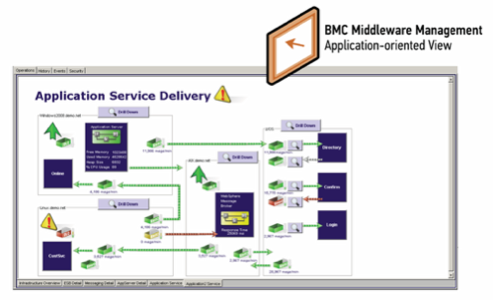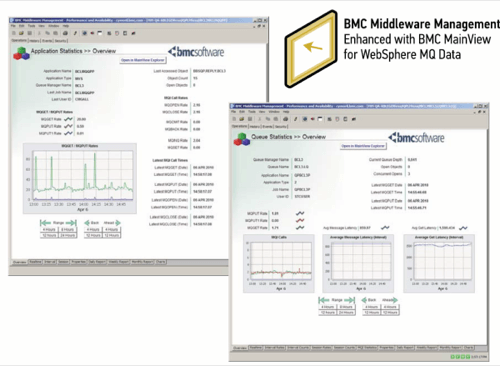One of the unanticipated problems of moving businesses’ data centers and desktops into cloud-based deployments surrounds middleware, the class of software whose job is to enable better connections between users and their applications by way of messaging. For several years, enterprise application integration (EAI) has been a hot architectural trend, but the problem has come from a vast and growing array of differentiated messaging formats (including WebSphere MQ from IBM, Java Message Service from Oracle, and TIBCO Enterprise Message Service), all designed to integrate the way applications communicate with each other, but all of which now compete with one another for space on the fattening enterprise service bus (ESB).

Moving the ESB to the cloud is getting to be like cramming a live snake into a glove compartment. In an effort to radically simplify the process, BMC Software yesterday rolled out a wave of updates to its Middleware Management tools suite. The goal is to give IT managers a clearer view of the transactional pipeline between applications and clients, by way of middleware.

The latest version of Middleware Management presents live drilldowns, like the one shown here, of company domains and the transaction paths for messaging systems across those domains. There you can see in real time how many messages per minute are processed in each segment of the transaction trail. Think of it as a Google traffic map for your enterprise.
“BMC Middleware Management automates the resolution of common problems,” reads the company’s latest white paper on middleware management (PDF available here). “It helps you find and fix problems quickly with real-time performance and availability monitoring and application transaction tracing, and it stores historical data so that you can isolate and resolve chronic issues. Reporting and analysis help you identify process improvements. With BMC, you can now answer such questions as: What transactions are flowing through our infrastructure? Are we delivering them in a timely manner? What went wrong and why? Are we using our resources optimally? Do we need to adjust resources? Will we have enough availability next year?”

The figure above shows two dialog boxes showing performance metrics for messaging on an individual application, and an individual messaging queue.
The transition process between locally hosted and cloud-hosted resources has – for many businesses – faced bottlenecks caused in large part by architectural differences in middleware-driven messaging that don’t translate well to cloud architecture. A study published late last year by the Cloud Security Alliance, a consortium of leading cloud providers, illustrates how the implementation of middleware messaging on a Platform-as-a-Service (PaaS) architecture reverses the flow of trust that’s necessary for the receiver of middleware messages to validate the sender.
“Even though the PaaS platform’s application building blocks are similar to their traditional enterprise counterparts,” the study reads, “the multi-tenant nature of the cloud computing environment requires the application’s assumption about trust to be re-evaluated. For example, securing the messages on the ESB becomes the responsibility of the application because controls, such as segmenting ESBs based on data classification, may not be available in PaaS environments. PaaS providers may also offer built-in application security controls within their programming environment to help developers avoid known application vulnerabilities.”
Though BMC Middleware Management is not a cloud-specific tool set, when deployed in a full or hybrid cloud environment, conceivably its Root Cause Analysis feature could enable IT managers to visualize exactly the problem that the CSA points out, and conceive future architectural remedies.




















